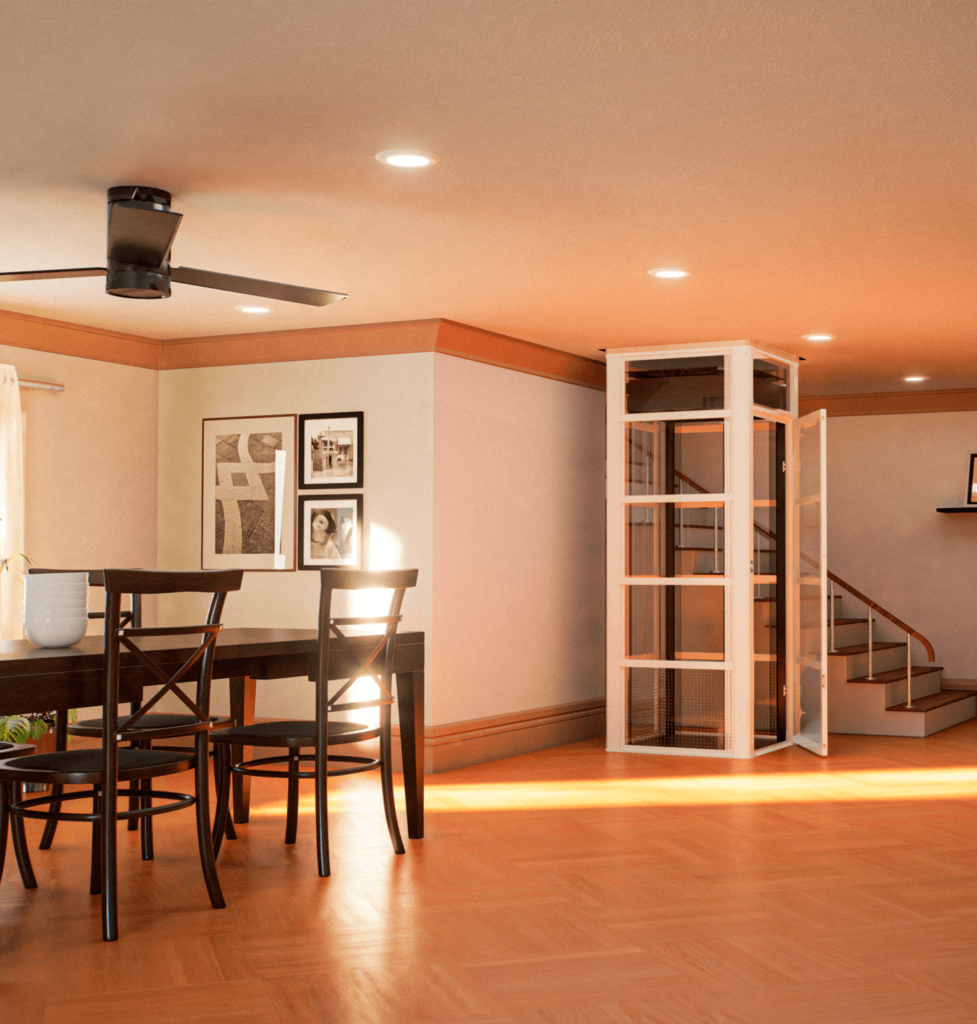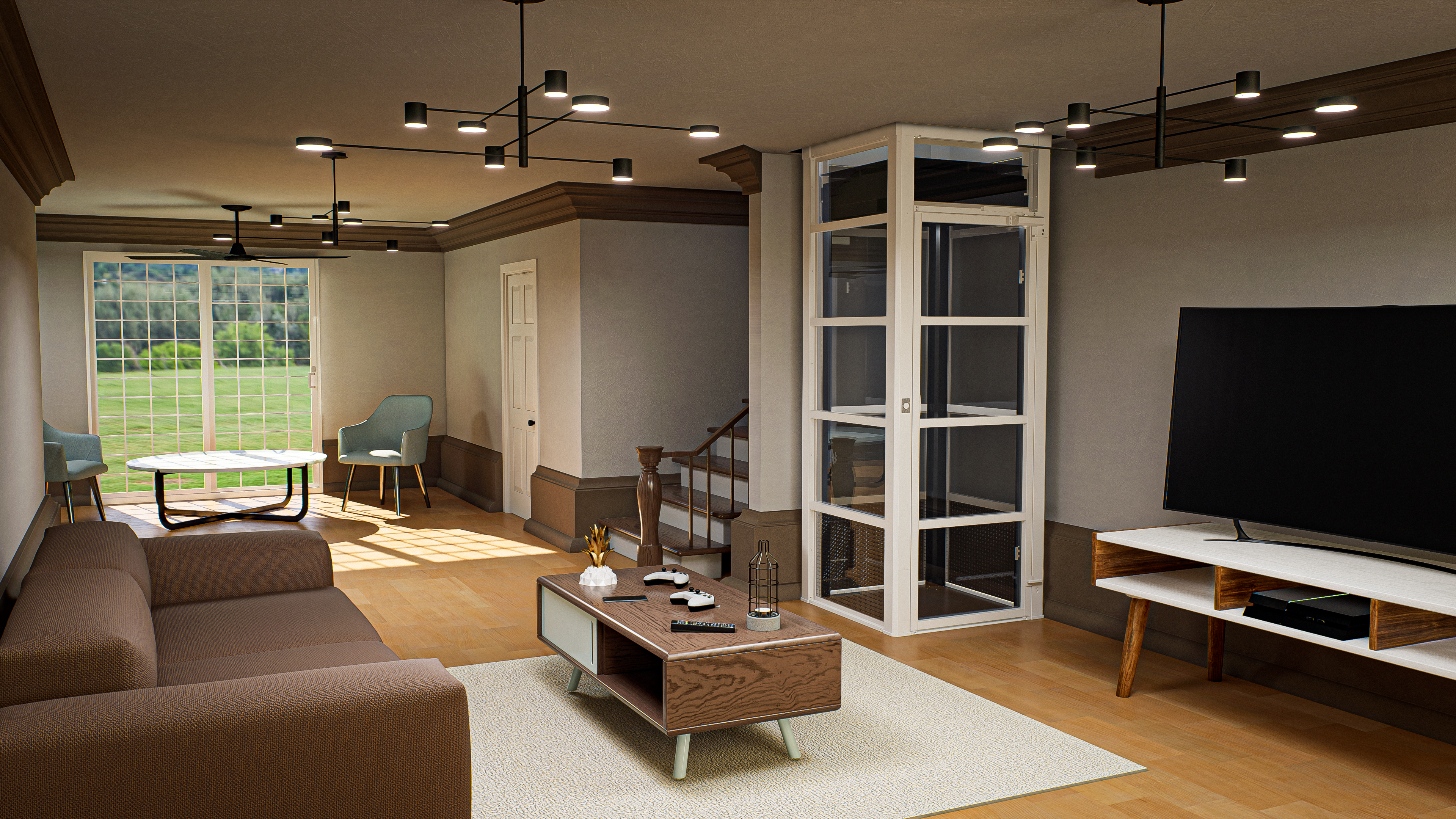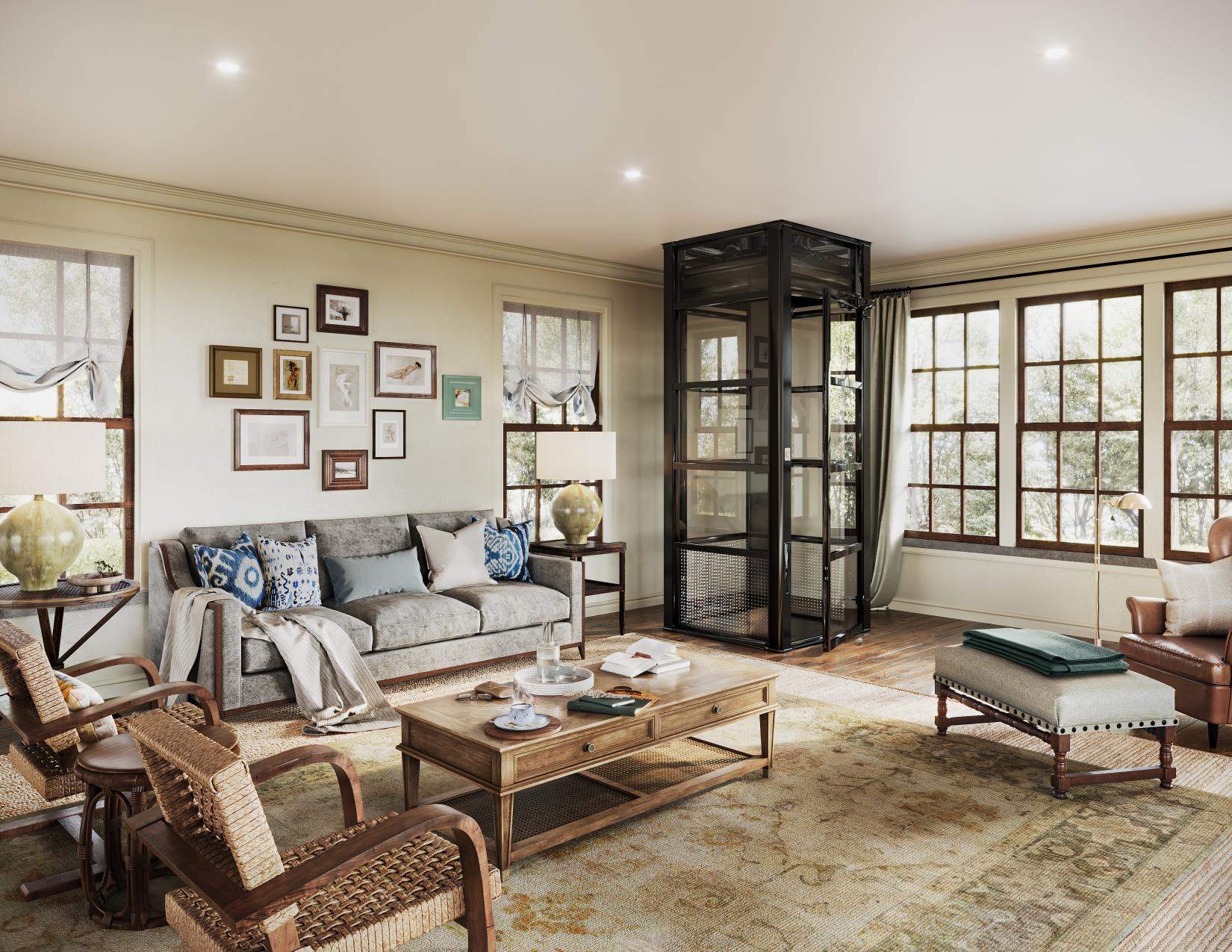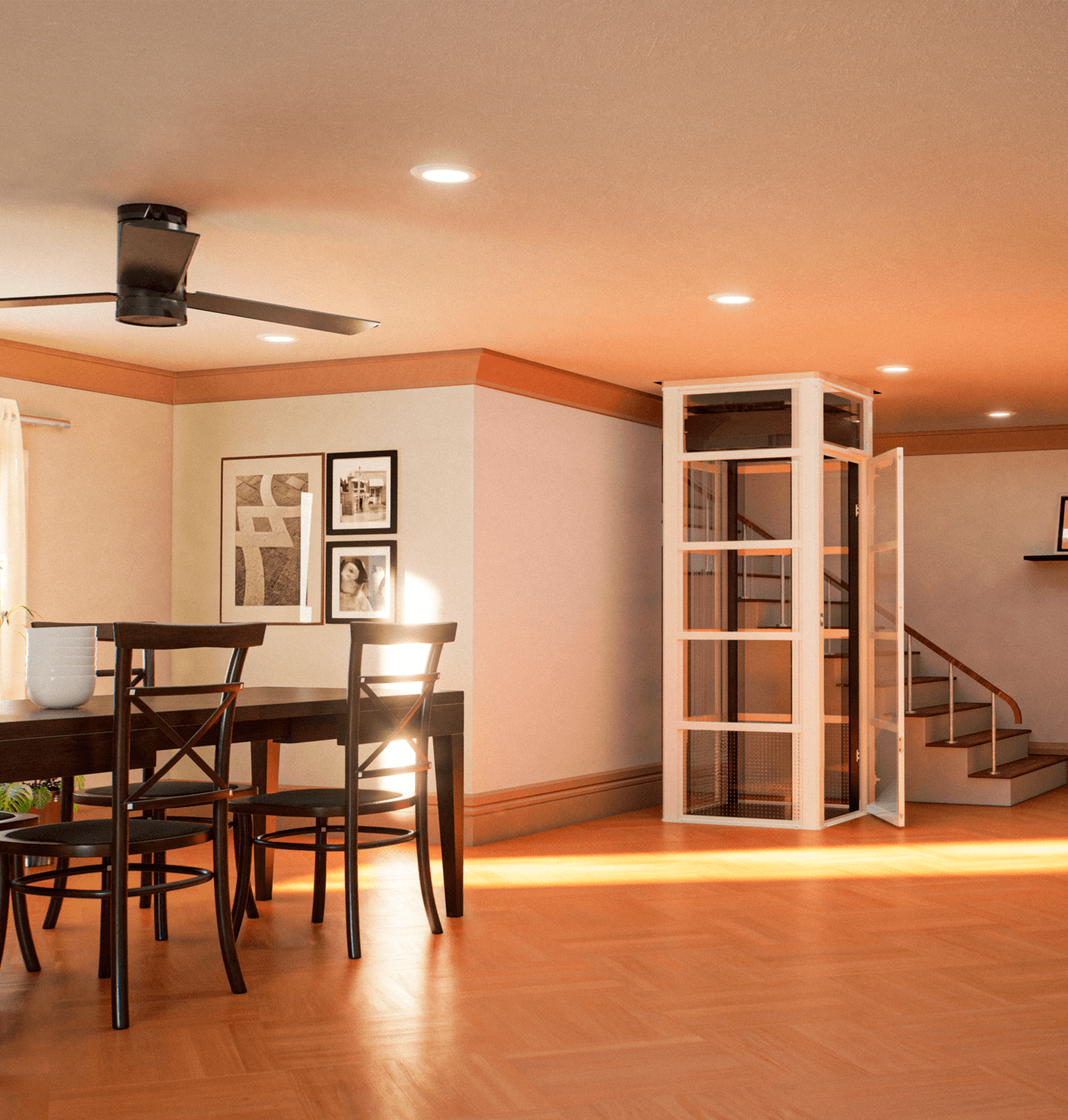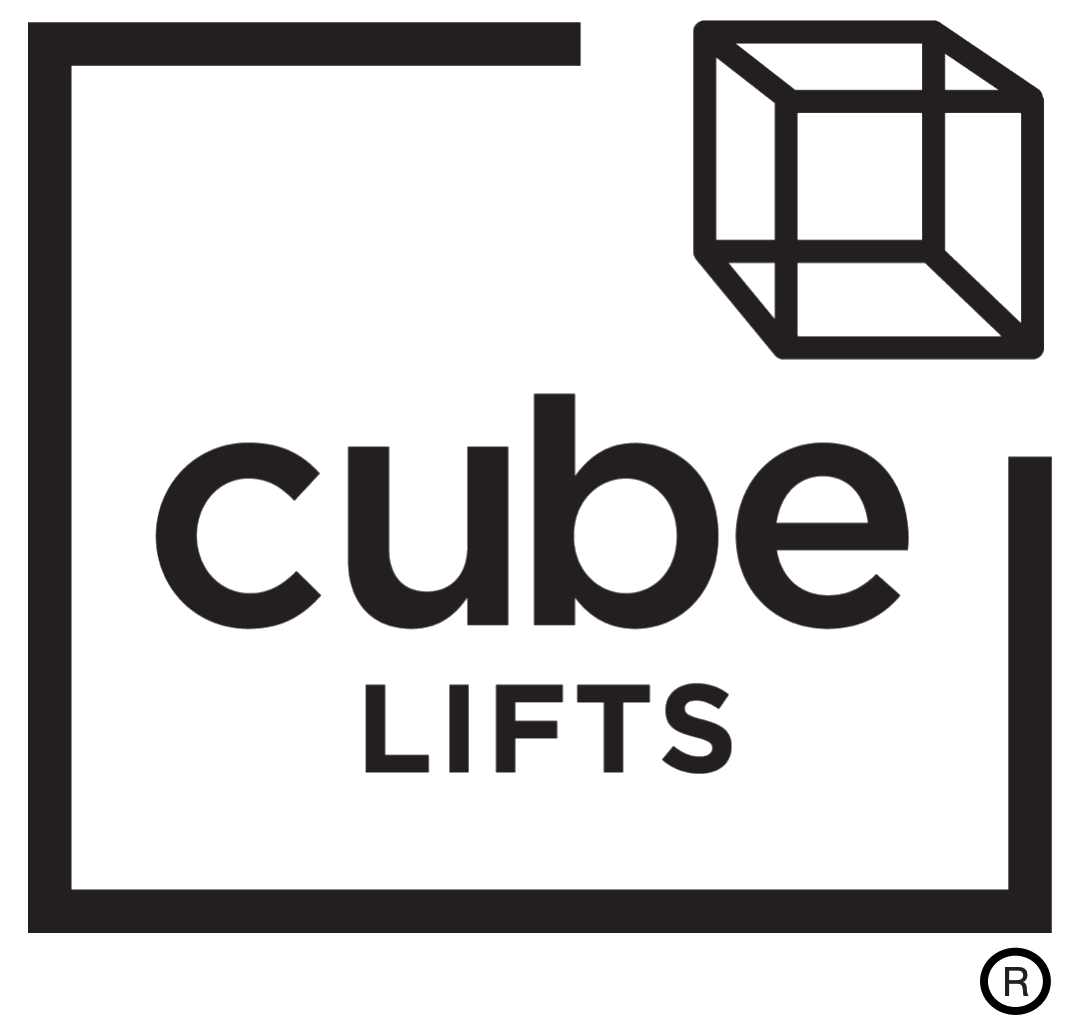Home elevator systems are the latest innovation to maximize vertical movement while reducing space requirements within a building. Such elevators are suited for homes and buildings where there is not much space available, like urban areas or single-family homes, where it may not be possible to install traditional elevators. By adopting small and energy-saving architectures, elevators that use less space can be built in smaller or limited spaces without compromising quality or aesthetics.
Features such as pneumatic technology, smaller drive systems, and customization options enable these elevators to fit in with a wide range of home designs and provide greater accessibility and convenience. These elevators are designed especially for those with mobility issues because they provide an efficient and trendy means to transfer floors in tight spaces without compromising on comfort and luxury.
Efficiency in Vertical Transportation for Luxury Home Elevator Systems
Vertical transport efficiency for home elevators is a multidimensional process that relies on smooth operation, energy savings, and comfort. Elevators are not just a function for luxury homes, but they are part of the architectural design of the home that offers comfort, accessibility, and beauty. Technology, design, operation, and maintenance all affect how effective such systems are.
Luxury home elevator systems are often designed to enhance the design of the home without disrupting its functionality. One important aspect of efficient design is selecting the drive system for the elevator. Gearless traction systems can offer some benefits because they operate quietly and require less energy.
These mechanisms use an electric motor to power the elevator via a pulley mechanism. This reduces friction, prolongs system life, and counterweights are used to offset the weight of the elevator car, thus lowering the operating energy cost. Using gearless drives also makes the system work more effectively and does not require regular lubrication, which further minimizes the maintenance requirement.
Another variable that influences efficiency is the elevator’s speed. While commercial elevators focus more on speed due to the high number of trips, luxurious home elevators focus more on smoothness and convenience. To be considered a swanky experience, the elevator must be a smooth and regulated ride of slow acceleration and deceleration.
This comforts residents and avoids sudden starts and stops that could disrupt the user experience. Additionally, slow but smoother processes lessen the system’s wear and tear and increase its life and overall efficiency.
Maximizing Space in Luxury Home Elevator Systems
Creating the best space in your luxury home elevator is a significant aspect of contemporary design, where spaces are often open-plan. In a grand residence, the elevator is both a tool for vertical transport and a crucial design component that should blend in with the rest of the home. Thus, elevator designers and manufacturers develop cutting-edge engineering solutions such as pneumatic technology, that allow elevators to take up the least space while being functional, comfortable, and flexible in design.
It starts by maximizing the space available inside the elevator car and shaft. Elevators that are designed for luxury homes are usually made in accordance with the home’s specific dimensions so that they have as small a footprint as possible while still catering to the individual’s needs. A staircase, for instance, could be sized to fit a mansion on multiple floors, with a small, space-efficient cabin capable of carrying passengers.
The shaft is also designed to occupy minimal space and often uses innovative architectural techniques that place the elevator into walls, corners, or even concealed areas of the house. Another design approach to saving space on luxury elevators involves small, energy-efficient drive technologies. Pneumatic elevators, for example, combine a self-supporting design with eco-friendly technology that does not require a pre-construction shaft built.
If needed, there are select luxury elevators that operate using gearless traction drive systems, which are much smaller and more compact than traditional drives. These systems use motors that are mounted directly to the shaft of the elevator and don’t require giant machinery rooms or overhead structures. This allows you to integrate an elevator into a location where space is not ideal, or the design needs to be open and uncluttered. For the ideal space-saving solution, pneumatic elevators have the most compact footprint of any home lift on the market.
Beyond slicing down the drive assembly, new materials and construction techniques further reduce the footprint. Luxury elevators, for example, often use thin yet durable components like aluminum or high-strength steel to build the cabin and frame, thus making the system lighter. In addition, advances in technologies have made it possible to create elevators with smaller profiles so that they can be placed in a tight space or in a narrow shaft without losing performance or design.
This is particularly helpful in high-end homes where every square inch is valuable, and you want the elevator to blend into the design of the rest of the house. Another means of maximizing space includes specialized control systems that facilitate the elevator’s movement without the use of heavy controls. Convenient digital controls make it possible for the homeowner to control the elevator via touchscreen, mobile app, or voice command rather than using mechanical buttons or clunky interfaces.
This not only makes more space in the cabin but also allows for sleeker, more minimalist designs. In some instances, the panel could even be wall-mounted or part of the house’s overall smart home network, providing an added layer of convenience while ensuring privacy.
As with other luxury home elevator systems, design aesthetics is a part of securing space. Cabins themselves are often smaller and more opulent, built from materials like glass, wood, or polished metals. This allows for an impression of airiness, even in a small interior.
Panoramic elevator, for instance, allow passengers to take in a 360° degree view of the environment around them. This makes the cabin seem more spacious and airy while offering a gorgeous view while traveling between floors.
This layout also improves the use of space inside the home. Luxury elevators can be installed in a number of different environments, whether inside an elevator shaft or in creative places like a closet or cabinet. With consideration to the home’s shape and traffic, designers can place the elevator in a manner that does not disturb the overall interior. Pneumatic elevators simply rest on the existing ground floor offering more flexibility of installation inside the home.
In some cases, elevators are even concealed behind walls or incorporated into the home’s design so that the elevator isn’t prominent and still very accessible should a need arise.
Enhancing Building Accessibility with Space-Saving Elevators
Making building space accessible with small elevators is one of the most critical features of contemporary architecture, especially in dense urban areas where space is scarce. These elevators are a convenient and effective solution to multi-story houses or complexes, making it accessible to anyone with a disability, the elderly, or with heavy goods. Efficient elevators use minimum space and maximum efficiency, providing access while maintaining the overall appearance or architecture of the building. As residential elevators, please note that not all home elevators are ADA compliant.
One of the most common ways that space-efficient elevators make access easier is by making them smaller. Elevator designs, particularly those suited to large buildings, usually require large space for the elevator shaft, the mechanical room, and infrastructure. Yet, ultra-compact elevators rely on higher technologies and more effective motors (such as gearless traction) to make the components as small as possible.
These machines generally don’t even require a machine room because they house the motor and control units within the shaft. This helps the elevator fit into smaller homes or apartments without using up valuable living space. This means the elevator is adaptable to a variety of environments, from small areas or older buildings where conventional elevators would not work.
A second major advantage of space-saving elevators is that they can improve vertical transportation in restricted or non-traditional spaces. In most houses or single-family buildings, the floor area available for an elevator is limited due to floors or structural components like walls, stairs, or windows. The ultra-compact elevators are made to squeeze into such cramped spaces, tucked into the existing stairwells or behind walls or cabinets so that they are virtually undetectable when not in use.
This pairing enables the building to maintain its architectural character and provide the convenience of a fully functional elevator. By carefully examining the building, architects can place these elevators in the best available spaces (corners, corridors, even under stairs), without putting an undue strain on the building’s flow.
These elevators also enhance accessibility because they let people with mobility challenges or disabilities pass between floors. Such systems are small and thus very suitable for architectures where accessibility features must be included without losing floor space. High-volume elevators are usually designed with easy-to-use buttons or could be upgraded to voice control or touch screens so that people can navigate through them easily.
For those with mobility issues or difficulties taking care of heavy items, elevators provide residents with an easy, safe, and reliable way to travel between floors and enhance their quality of life and independence. The design also makes the system compliant with accessibility requirements, providing wider door openings and smooth, gradual floor-to-floor transitions for wheelchairs, walkers, or strollers.
Luxury Home Elevator Systems: FAQ
Luxury home elevators are high-end vertical mobility systems for the home. They move seamlessly and effortlessly from floor to floor, combining high-tech.
Elevators in luxury homes offer convenience, accessibility, and mobility, particularly in a multileveled property. They are perfect for families with small children, senior citizens, those with physical disabilities, or anyone who has to move heavy things between floors.
Some different types of luxury elevators include hydraulic, traction, and pneumatic home elevators. Elevators by hydraulic are renowned for their fluid operation, whereas pneumatic elevators are air-driven and use energy-efficient technology.
How much space a luxury elevator needs depends on the system and the style of the home. Pneumatic elevators, for instance, are space-saving solutions because they do not need a dedicated machine room.
